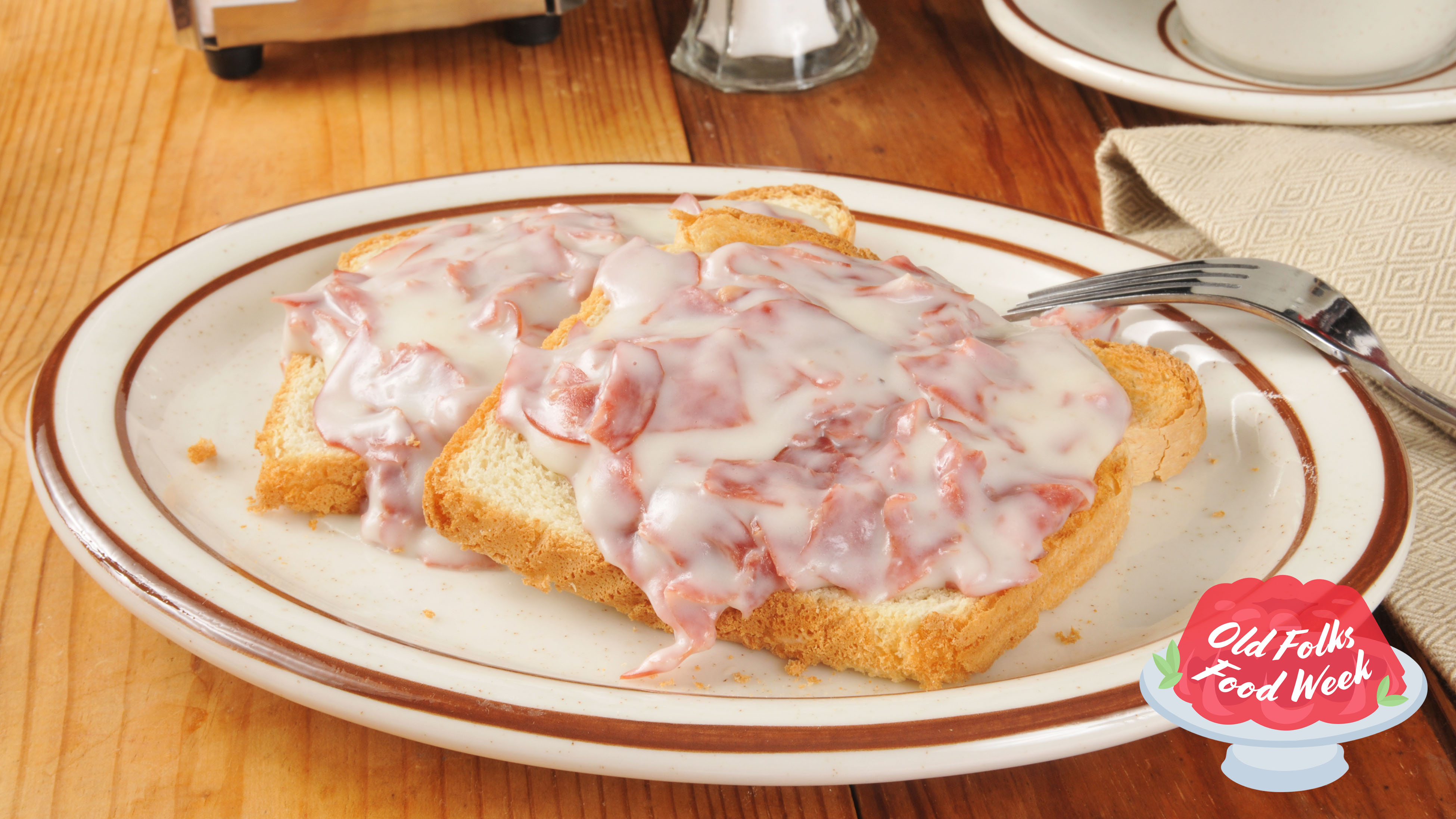Creamed Chipped Beef Is The Mess Hall Staple-Turned-Hangover Cure
We may receive a commission on purchases made from links.
Welcome to Old Folks Food Week, where we resurrect and celebrate the delicious dishes of yore.
Mess halls often evoke no-muss-no-fuss-no-taste food due to the restrictive requirements to properly feed an entire military outpost. That is, the food needs to be easy, fast, and cheap to produce in large quantities while only reasonably resembling an actual meal. (I could only assume it's one step up from prison cafeterias.)
Enter chipped beef, a form of pressed, salted, and dried beef sliced into thin pieces, which appeared in military cookbooks as far back as 1910. As Hormel described it, chipped beef is "an air-dried product that is similar to bresaola, but not as tasty." Damn, Hormel doesn't play, but the company did add, "it is often added to sauce or gravy and served on toast." And there it is, another feat of American ingenuity: Take subpar meat, salt it to hell to hide any inadequacies, then mask it further by dousing it with a creamed sauce.
And oh my, is it good. It is, what I and millions know colloquially, as shit on a shingle.
It's an unsavory moniker for a savory dish in which the shit is traditionally a salty combination of meat and gravy and the shingle is the cheapest starch you can scrounge up. Sometimes, the meat is so salty it needs to be soaked in warm water for 15-20 minutes, as evidenced by a recipe from the 1945 version of The Cookbook Of The United States Navy (see photo). According to the encyclopedic The Oxford Companion to American Food and Drink, chipped beef most often comes from the top or bottom round, the sirloin tip or the knuckle—all of which are leaner cuts of meat. This beef would then be brined (which gave it its saltiness), dried, and sometimes smoked. Once hardened, it would be sliced into "chips," hence.

In my household, we need not worry about bathing any over-salted beef though, because we used ground venison covered in pepper-heavy milk gravy placed atop white toast to make S.O.S., the acronym my dad used until I was old enough to hear him use the vulgarity, so basically through high school (oh sure, 18 was the age I first heard the word "shit"). In our household, S.O.S. has also been known to stand in for stew on a shingle, same old stuff, and save our stomachs. All of which are, of course, a play on the international Morse code distress signal used to request help when catastrophe is imminent. That irony was not lost on me.
But I grew to love it. Shit on a shingle was a holdover from my father who never served in any military branch but did grow up in a 12-person household often strapped for cash, and equally reliant on reasonably cheap and fast-to-make food for a large brood. Like many blue-collar foods, the dish has now morphed from sustenance to nostalgia, and it's become comfort food for both of us. (Heck, you can even buy it ready-made frozen in a box.) I find it particularly amusing to see this utilitarian dish made sexy and bougie in glossy gourmet magazines. A year-long stint in Philadelphia revealed to me an alternative history in which it's a regional breakfast staple. Men's Health focused on the food's breakfast appeal, touting it as the "best hangover meal you'll eat." (I can vouch for its ability to curb the sort of salt craving that drinking can induce even if it doesn't actually cure anything.) Interestingly enough, it was Men's Health and not Saveur that dressed the recipe up with sourdough, while the latter publication reprinted the 1945 recipe.
As someone who grew up on this dish, I'm delighted to see it make a modest comeback in some culinary circles. It's a poor man's biscuit and sausage gravy, and an even poorer man's Eggs Hollandaise. Like those dishes, creamed chipped beef, checks off the boxes for salted meats ✓, creamed sauce ✓, a breaded base ✓, morning delight ✓. Yeah, I'd eat that shit any day.
